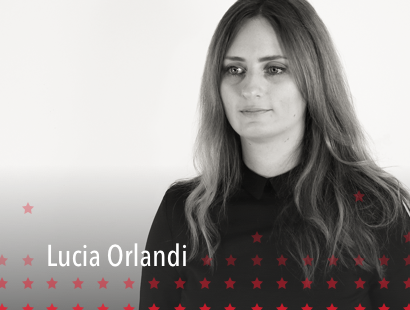
Next Creative Leaders 2017: Sakshi Choudhary
on Oct 28, 2017
Sakshi Choudhary
Creative Supervisor - OgilvyOne Worldwide Mumbai
Three words you’d use to describe yourself?
Sensitive, gawky, relentless.
What work are you most proud of and why?
In 2016 I read about India’s ranking on the UNDP Gender Inequality Index—132 out of 148 countries. I decided then and there to do my bit to eradicate gender bias in India through art.
I founded The Seesaw Project with two men to help lead the conversation against patriarchy. We’ve released three series to date – one about the toxicity of casual sexism, one about how patriarchy is harmful to men, and one about eliminating gender biased swear words. Up next, we’ll tackle marital rape (which is currently not considered criminal in India).
While the project has received a lot of media coverage, I’m more proud of the serious conversations the project is triggering on social media.
What does leadership mean to you?
Leadership means being a mentor to a set of individuals, and being personally responsible for their growth. It comprises embracing these individuals as their real authentic selves and inspiring them to reach their true potential, regardless of their gender or race.
What’s your “breaking into advertising” story?
Like most Indian children, I felt obliged to attain a professional degree and be ‘settled’. I finished my MBA in 2008, and landed a job as an Innovation Manager at one of the world’s leading IT companies. And just when it was turning out to be a perfect beginning, I quit.
My decision to quit and enroll in advertising school was based on answering the question “am I really making a difference with what I'm doing?” I believed advertising would enable me to have an impact, and that was all the ammunition I needed to make that change.
I embarked on my advertising journey a little less than six years ago. And in those six years, I’ve crashed my car learning about crash tests, written invoices sitting atop a hill in the city of Bath, spotted my first grey while working on a hair care brand, found my favourite track while working on a case study.
What’s is the biggest challenges you face as a woman creative in India? And what’s the biggest opportunity?
I feel an enormous responsibility to be the catalyst of change as a woman creative, while fighting personal societal pressures. I find it challenging, yet ironic, to have to convince our industry that a woman brings a certain perspective that doesn't come as naturally to a man. And different perspectives are imperative for a business that runs on ideas.
Before being a woman in leadership, you had another experience with being a minority in business. Can you tell us about that?
Before working at Ogilvy Mumbai, I worked as a freelance writer in the city of Bath, UK, for a year and a half. While that was a steep learning curve, it taught me so much. Working independently, networking, following up on payments, negotiating, and to top it all, marketing myself as a writer from India, and a woman of color in a city that was 98% white was grueling and rough. I was so different than anything my clients had experienced before. So I had to work excruciatingly hard to get them to trust me with their business.
What did you learn from that experience and how has it helped you in your career?
I owe a lot of my current success to my experience in Bath. Apart from making me more resilient and persistent, it changed my whole outlook towards work. I am way more observant, open-minded and surprisingly optimistic. It sparked the itch I have to make my mark as a global creative person.
You haven’t always had access to a ton of female mentors. How are you helping support the women coming up behind you?
India has extremely talented female Creative Directors. Their breadth of work is fantastic. But when you start counting, there aren’t enough of them to go around. Compared to the men in leadership positions, the ratio is woefully low.
I am currently working towards building an industry-wide mentorship program that will connect junior creative women to senior ones, and create a two-way channel between them.
India has received a lot of buzz for their gender stereotype crushing work lately. What do you think is driving that trend?
India is on the brink of a gender equality wave. Women are making most purchase decisions. A growing number of women are the primary earners for their families, more are stepping into leadership roles. And thanks to social media, women are making their voice heard more than ever before. So taking a stand for equality isn’t just a trend or the lowest hanging fruit. It’s the need of the hour.
The scale of advertising in India has the power to crush gender stereotypes. Agencies and clients that recognize this and are brave enough to put forth that point of view have the opportunity to create meaningful change—and award-winning work.
Who’s your biggest #Shero right now?
I’ve been a huge fan of Madonna Badger for a while now. The fact that she’s been able to make a dent in the industry from within, without fearing the loss of clients, just shows how bold she is. I just adore her. Yes, Madonna, yes!
I also absolutely love Serena Williams. She just silently shuts down her critics through great performance.
Tags
Related













